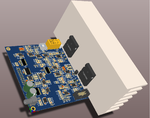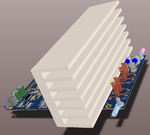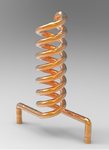asrock70
Full Member level 4
DC Electronic Loads with digiral ciontrol?
It is not a problem to design and build an electronic load as HP 6060B, but it will be complex and complicated analog design.
To solve this 4-channel load would be extremely expensive and complex.
I'm thinking about hardware simple design.
My idea is only two big MOSFET any as IRFP260N.
MISFET is drivers simple amplifier with analog feedback only in Constant current mode.
Current measure on low ohm resistor with current measure amplifier (0-40A (2x20A)).
Voltage measure voltage differential amplifier 0-60V.
Everything else, leave on digital control for example MCU STM 32F373 2x 1MSPS 12dit DAC and 12bit ADC make digital control in Constnt voltage mode, in Constant resistance mode and jump load change.
Clearly, it will not be as fast as an analog feednack, but ....
It's nonsense, or it's worth exploring?
It is not a problem to design and build an electronic load as HP 6060B, but it will be complex and complicated analog design.
To solve this 4-channel load would be extremely expensive and complex.
I'm thinking about hardware simple design.
My idea is only two big MOSFET any as IRFP260N.
MISFET is drivers simple amplifier with analog feedback only in Constant current mode.
Current measure on low ohm resistor with current measure amplifier (0-40A (2x20A)).
Voltage measure voltage differential amplifier 0-60V.
Everything else, leave on digital control for example MCU STM 32F373 2x 1MSPS 12dit DAC and 12bit ADC make digital control in Constnt voltage mode, in Constant resistance mode and jump load change.
Clearly, it will not be as fast as an analog feednack, but ....
It's nonsense, or it's worth exploring?




